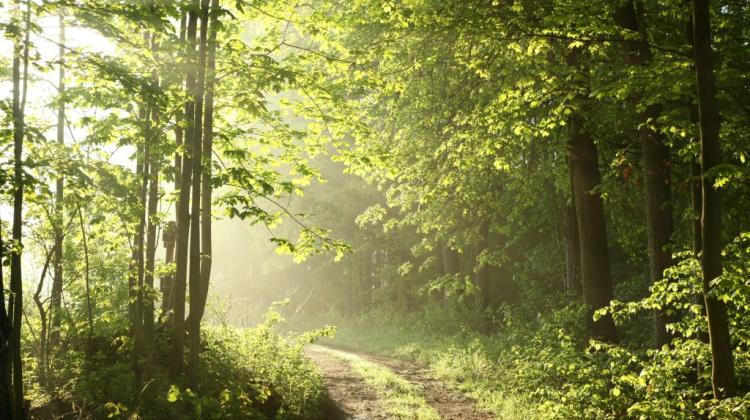It's not easy to grow a superforest

Forest trees - like fruit trees and flowers - can be cultivated so to obtain specimens best suited to human needs. However, this process takes much longer and is not as intense, according to tree researcher, Dr. Daniel Chmura.
"A single part of the forest can not serve all the functions to the same extent: we can not have a large amount of good wood and a forest attractive for tourists, with mushrooms and berries, in one area. To some extent, these functions are mutually exclusive" - admitted Dr. Daniel Chmura from the Institute of Dendrology PAS in Kórnik in an interview with PAP.
In his opinion, the intensive timber production function should be separated in the forests. "This would involve the creation, in addition to multi-purpose forests, of production plantations for specific purposes - for the production of biomass and raw material for paper and boards. These plantations would help decrease the operations in other areas of the forest" - he believes.
Artificial selection has led to rattlers and dachshunds being bred from wolves, and large, sweet and juicy apple varieties from wild apple. Such artificial selection is also used in forest tree cultivation. "But the process is much , much slower" - explained the researcher .
To obtain a tree with the best production characteristics, you have to collect seeds from the best specimens. The selection criteria may be different. For example, you can improve the productivity of trees, by collecting seeds from thickest and biggest trees. On the other hand, in order to improve the quality of wood, straight trees with thin branches and highly embedded crown are selected. These trees are selected on the basis of appearance, external features. But not all the desired features can be recognized by sight - on this basis it cannot be determined which trees better absorb carbon dioxide , are resistant to pests and environmental stress.
Dr. Cloud described the selective breeding of trees. One simple way is the population selection. Foresters select populations of trees with superior features and collect seeds from them, either during removal , or - in the case of the most valuable populations - in years of seeds abundance, from living trees. The seeds are used to plant new forests. This method, however, is somewhat burdened with risk - it is uncertain, what tree has pollinated the specimen. The seeds can be the offspring of any tree in the area, not necessarily of one of high genetic quality.
Creating selective seed orchards gives more control over the genetic pool of trees, whose offspring is grown. Pieces of branches, so-called slips, are collected from the trees, which - judging by the appearance - seem to be the best, and planted on other specimens in a separate culture. This creates clones of trees, which after a while pollinate their selected neighbours and grow seeds.
Dr. Chmura admits that it takes many years. In the case of pines, the first seeds occur on average after six years, but foresters may even have to wait 10-15 years for a good harvest. It is not known whether these seeds are of high genetic quality. "If a tree is chosen only on the basis of its appearance, there are no guarantees that its offspring will be very good" - said Dr. Chmura. The appearance of tree is affected not only the genes of the plant, but also the soil, minerals, sunlight and climate. A tree can look great, but its clone, which grows in different conditions, does not have to be of high quality. "You have to do more tests on the offspring. Such a project is carried out by the National Forests. Only tests will tell which trees are the best" - explained Dr. Chmura.
As for the selective breeding of trees, researchers from all over Europe, including a team from the Institute of Dendrology PAS, cooperate in the project Trees4Future. The aim of this project is to integrate scientists who study trees and facilitate access to various research centres.
PAP - Science and Scholarship in Poland, Ludwika Tomala
lt/ agt/ mrt/
tr. RL
Przed dodaniem komentarza prosimy o zapoznanie z Regulaminem forum serwisu Nauka w Polsce.















